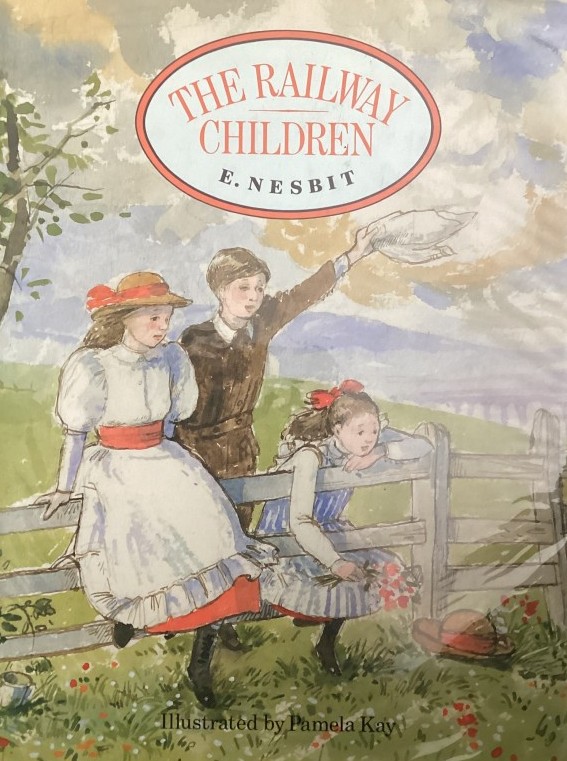Inspiring Young Readers
 posted on 20 Jul 2022
posted on 20 Jul 2022
The Railway Children by E. Nesbit
Prolific children's author, Edith Nesbit (1858 - 1924) is a fascinating and complex character. This is not the place to look at her extraordinary biography in detail but an appreciation of what is probably her most famous book, The Railway Children, is certainly enhanced by knowing that she was a radical thinker, a committed Socialist and, along with William Morris, the co-founder of the influential Fabian Society. I think it's also relevant to some of the key themes in The Railway Children that her private life and her convoluted relationships with her own and her 'adopted' children (the result of her husband's infidelities) were often unsatisfactory and at times chaotic.
The Railway Children, published in 1905 in serial form in The London Magazine, comes along when she is already a well-established children's favourite. It's about her ninth or tenth novel and titles like The Would-Be-Goods and Five Children and It preceded it. But she really hits the jackpot with the story of three children - Roberta (Bobby), Peter and Phyllis - who are living a comfortable suburban and typically Edwardian life until, completely out of the blue, their father mysteriously disappears one evening with two men who call at the house.
Forced to relocate with their mother now in straightened circumstances, the children find solace in bonding between themselves and a growing fascination with the local railway. They make a friend of the local station master, Perks, and are soon known by the engine drivers and many of the passengers who regularly travel on the line. Most significantly for the way the story plays out, they make a particular friend of one passenger they call 'The Old Gentleman' who will feature prominently in the children's lives as a symbol of benevolent power.
The fact that the book was written originally as a serial to feature in a literary magazine accounts for the way the book progresses through a series of set-piece, almost stand alone, adventures. I don't think it would be useful to explore each of these because you'll certainly want to read them fresh for yourselves. I don't think it would be too much of a spoiler to say that one of these adventures is the now famous moment when the children prevent a disastrous train wreck by the ingenious use of red petticoats. And you'll also want to unscramble the threads that link all these adventures together - what has become of their father, who is the mysterious Russian who turns up at the railway station one day and who is the Old Gentleman destined to be their benefactor?
As I said at the outset, the book has become a firm favourite with readers and critics alike and is now routinely included in lists of children's classic literature. The book is often fondly remembered and has some influential cheerleaders - Jacqueline Wilson, for example - and, of course, it has been adapted for film and television with the likelihood of a sequel on the way.
Coming to the book for the first time and reading it with an adult eye, I'm struck but the unusual blend of rather typical Edwardian children's adventure and quite radical social policy. Modern day readers may well find that the endlessly selfless and saintly behaviour of the three children is improbable and, at times, cloying but their fidelity to family and to being socially responsible fits entirely with Nesbit’s political credo - as does the seemingly unlikely and romantic episode of the rescuing of the pre-revolutionary Russian radical.
I don’t think I risk spoiling the book for anyone who hasn’t yet read it to reveal that the reason for the mysterious disappearance of the children’s father is that he is unjustly suspected of treasonable activity and imprisoned. What this does is to allow Nesbit to introduce topics that would otherwise seem inappropriate in Edwardian children’s fiction - most especially the issue of how families cope with the imprisonment of a parent.
The Railway Children is one of those unusual books that manages to be both simple and complex at one and the same time. It remains remarkably readable despite its age and that is due to one thing - the skill of the writer.
Lots of copies - including illustrated ones - are easy to find in hard and paperback and you will be able to get a copy very cheaply. Just one word of caution - make sure you get an unabridged copy.
Terry Potter
July 2022